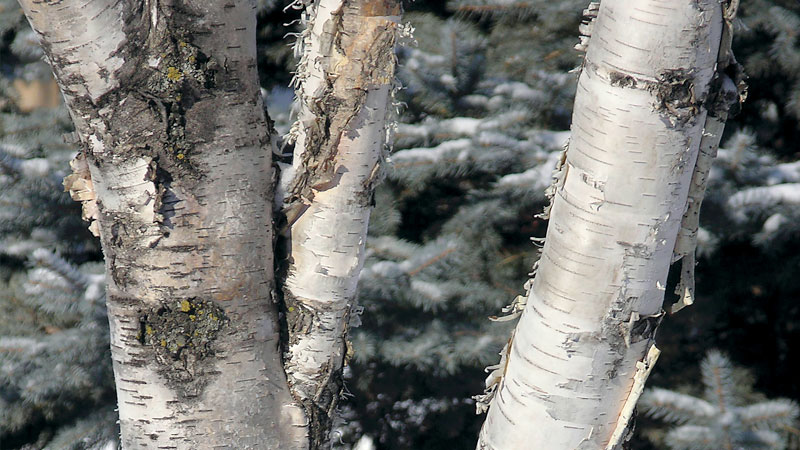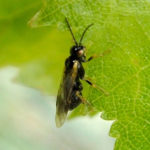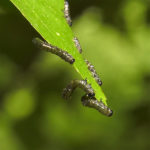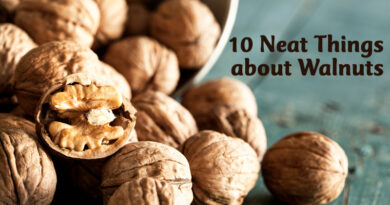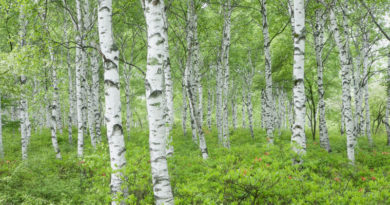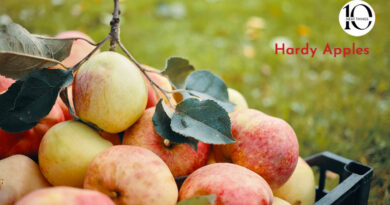Common Birch Tree Pests
The bronze birch bark borer and the birch leaf miner
Several pests attack birch trees, especially those that are under stress. Know what to look for and how to keep your tree safe from infection. Here are some of the common pests that infect our birch trees.
Bronze Birch Borer
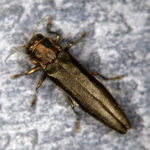
This eventually interferes with the ability of the sap to move through the tree to nourish branches, growing tips and leaves.
Adults then emerge, chewing holes that are shaped like the letter “D” (as in “danger”). Once infestation has taken hold, chances of survival are one in ten.
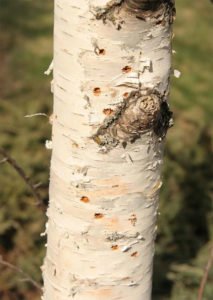
Protection: Keep trunks shaded. Borers prefer to lay their eggs in the sunlight. They are attracted to tree wounds, but wound dressings only exacerbate the problem. Allow the tree to heal naturally.
Take care with clippers and lawn mowers around the base of the tree. Avoid pruning in summer, which causes high sap flow which is attractive to migrating beetles. If you must prune, do so in late fall during the tree’s dormancy.
Water your trees well, as stressed trees are more susceptible. Let the tap run on trickle for several hours to ensure complete saturation.
Birch leaf miner
Detection: Leaf miners are more visible but less deadly than borers.
Watch for small white worms. The adult is a tiny black sawfly that lives in the earth in winter.
In June, the centres of leaves may appear a lighter green as leaf miners munch on inner leaf tissue. Then brown spots appear, resembling blisters with small raised black dots.
Protection: Use the soil drench method of control (as opposed to foliar spraying). You can apply a product called Lagon about 10 days after bud break in late May or early June.
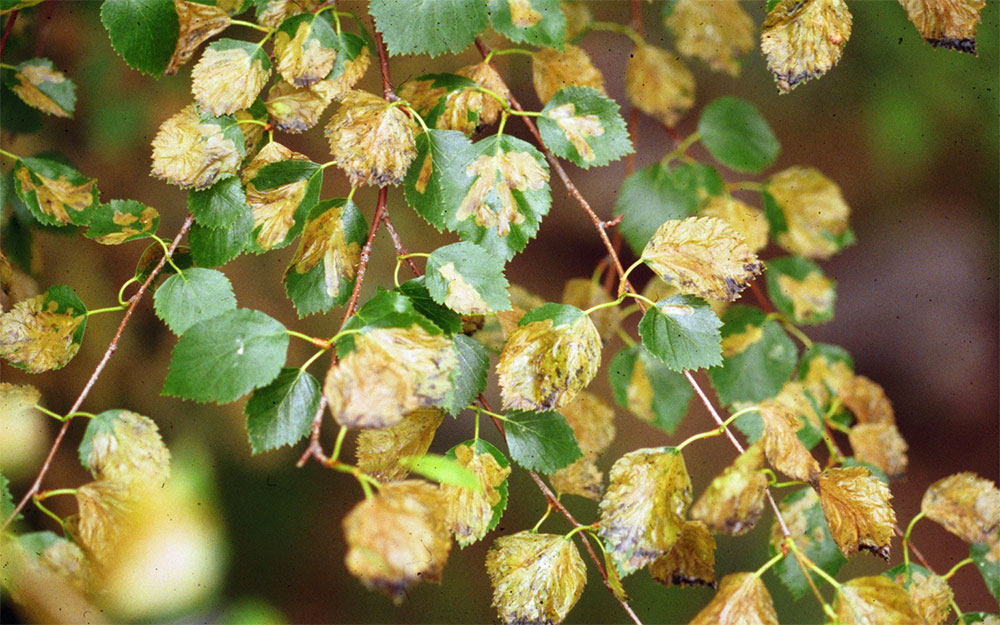
For more information about birch trees, click here.

